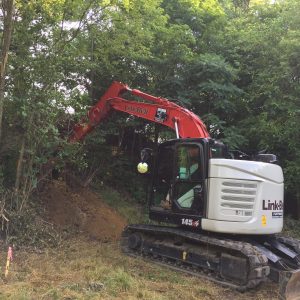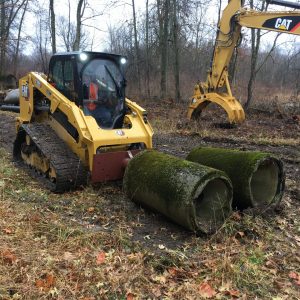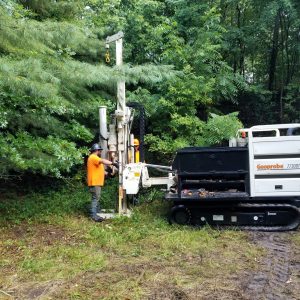Restoration at Neil A. Armstrong Test Facility
The Restoration Program at Neil A. Armstrong Test Facility. Protecting human health and preserving natural resources.
The Restoration Program at NASA’s Neil A. Armstrong Test Facility cleans up chemicals that have been released into the environment during past activities to ensure that human health is protected, natural resources are preserved, and the overall well-being of the environment is maintained. Plum Brook Station was renamed the Neil A. Armstrong Test Facility on December 30, 2020.
Numerous investigations have been conducted since the early 1990s, and currently there are 7 identified restoration sites. This website is intended to provide information concerning the environmental restoration activities at the Neil Armstrong Test Facility to the general public.
This website will be updated as activities at the test facility progress, so check back often or contact NASA at GRC-Restoration@mail.nasa.gov or 216-433-6028.
Burning Grounds
NASA issued the Proposed Plan for Fox Road Burning Ground, Snake Road Burning Ground, and Taylor Road Burning Ground addressing contamination at the former burning grounds located within the test facility in Sandusky, Ohio. The report describes the former burning ground operations, environmental investigations, and provides the rationale for recommending Remedial Action for soil removal. The public review period for the Proposed Plan was completed from February 28 to March 29, 2023.
The Proposed Plan can be accessed electronically using this link. Printed copies are available at Bowling Green State University (BGSU) Firelands Campus Library.
BGSU Firelands
One University Drive
Huron, Ohio 44839
Phone: 419-372-0739
NASA prepared a fact sheet to summarize the Proposed Plan and encourage public input to ensure the cleanup alternative selected for the three burning grounds sites meets the needs of the local community. Download the Burning Grounds Proposed Plan Fact Sheet.
For more information or if you need special accommodations, please contact NASA at 216-433-6028 or GRC-Restoration@nasa.gov.
PUBLIC MEETING
NASA hosted a public meeting at 7 p.m. on March 9, 2023 at the BGSU Firelands Campus, Cedar Point Center Building, Room 1009 to explain the recommendations in the Proposed Plan. Oral and written comments were accepted at the meeting.
Written comments may also be mailed to NASA’s Glenn Research Center, Environmental Management Office, 21000 Brookpark Rd, MS 6-7, Cleveland, OH 44135. Email comments may be submitted to GRC-Restoration@nasa.gov.
Additional Resources for the Burning Grounds remedial response.
Download the Burning Grounds Feasibility Study.
Download the Fox Road Burning Ground Phase II Remedial Investigation.
Download the Snake Road Burning Ground Phase II Remedial Investigation.
Download the Taylor Road Burning Ground Phase II Remedial Investigation.
Download the Burning Grounds Phase I Remedial Investigation.
Download the Multi-site Site Investigation.
Firing Range 3 & 4
NASA conducted a Non-Time Critical Removal Action (referred to as a Removal Action) at Firing Ranges 3 & 4 from December 2021 through March 2022. The Removal Action removed 20 tons of lead contaminated blast wall wood and then excavated, stabilized (if necessary), and disposed of an estimated 675 tons of soil contaminated with antimony; arsenic; lead; and carcinogenic polycyclic aromatic hydrocarbons (cPAHs) that posed a threat to human health and the environment. The below resources document the Removal Action implemented under CERCLA at Firing Range 3 & 4.
Download the Removal Action Work Plan for Firing Range 3 & 4.
Download the Action Memorandum for Firing Range 3 & 4.
Download the Removal Action Completion Report for Firing Range 3 & 4.
Firing Range 5 and Construction Debris Pile
NASA conducted a Non-Time Critical Removal Action (referred to as a Removal Action) at Firing Range 5 and Construction Debris Pile from February 2022 through May 2022. The Removal Action removed and properly disposed of 20 tons of asbestos and lead paint panels and 1082 tons of soil contaminated with polycyclic aromatic hydrocarbons (PAHs). The Removal Action also removed and recycled 1396 tons of concrete debris, 109 tons of limestone gravel, and 10 tons of scrap metal. The below resources document the Removal Action implemented under CERCLA at Firing Range 5 and Construction Debris Pile.
Download the Removal Action Work Plan for Firing Range 5 and Construction Debris Pile.
Download the Action Memorandum for Firing Range 5 and Construction Debris Pile.
Download the Removal Action Completion Report for Firing Range 5 and Construction Debris Pile.
ECCL Firing Range Removal Action
NASA’s Restoration Program presented the Non-time Critical Removal Action (referred to as Removal Action) developed for the former Erie County Conservation League (ECCL) Firing Range at a virtual Public Forum on July 27, 2021. In August 2021, NASA began the Removal Action at the former ECCL Firing Range located adjacent to the test facility’s eastern perimeter fence west of Route 250 (Milan Road).
NASA prepared a fact sheet to summarize the soil and sediment cleanup process at the ECCL Firing Range. Download the ECCL Firing Range Cleanup Fact Sheet.
Additional Resources for the ECCL Firing Range Removal Action
Download the ECCL Firing Range Preliminary Assessment.
Download the ECCL Firing Range Site Investigation.
Download the ECCL Firing Range Removal Site Evaluation Report.
Download the ECCL Firing Range Action Memorandum.
Download the ECCL Firing Range Removal Action Completion Report.
Community Involvement Plan
NASA has issued the Final Community Involvement Plan for Comprehensive Environmental Response, Compensation, and Liability Act (CERCLA) Activities at its Neil Armstrong Test Facility in Sandusky. The plan specifies the outreach activities that NASA may use to address community concerns and expectations for the cleanup process at seven sites located at the test facility. The Community Involvement Plan refers to Plum Brook Station because the plan was produced before December 30, 2020, when the facility was renamed to Neil A. Armstrong Test Facility.
Download the Final Community Involvement Plan.



